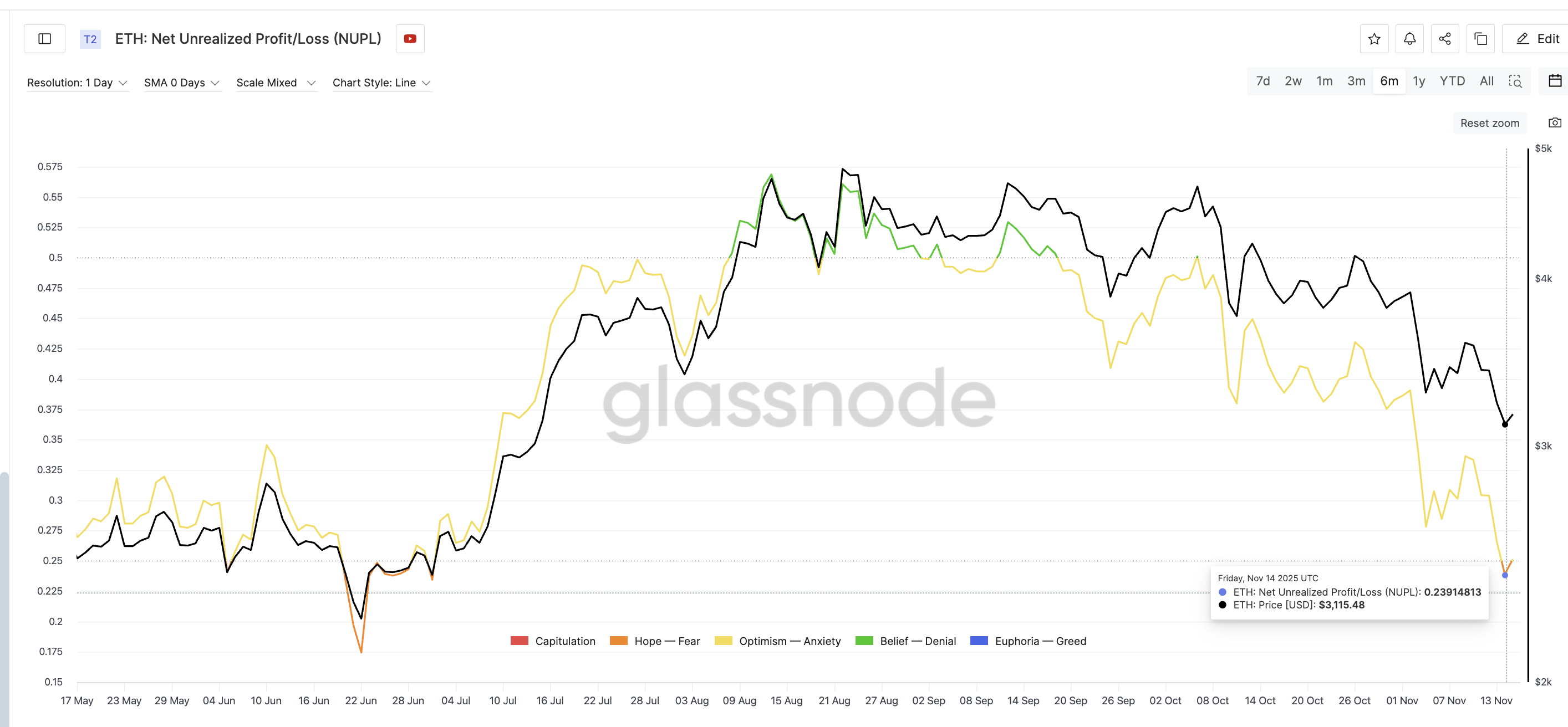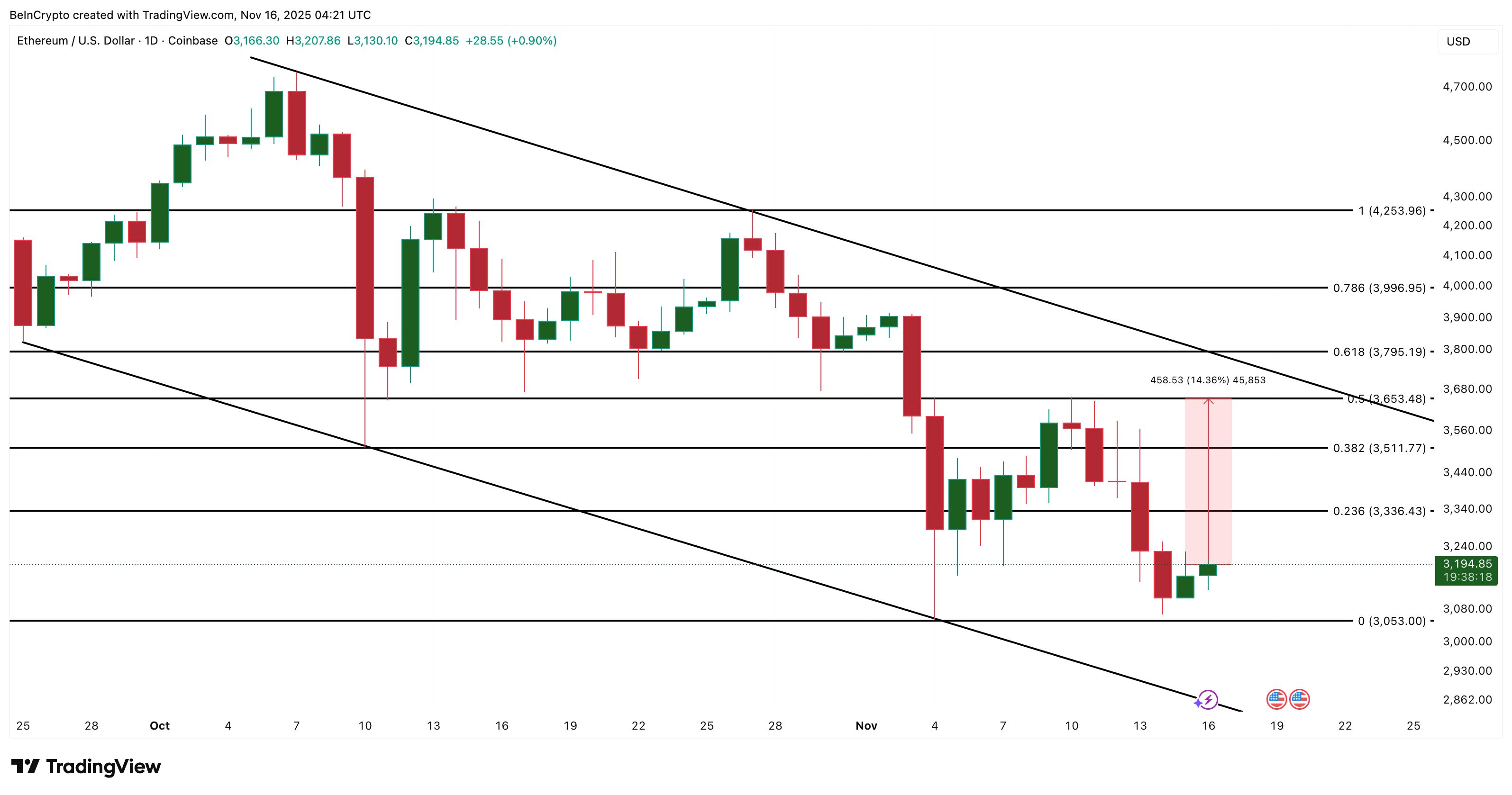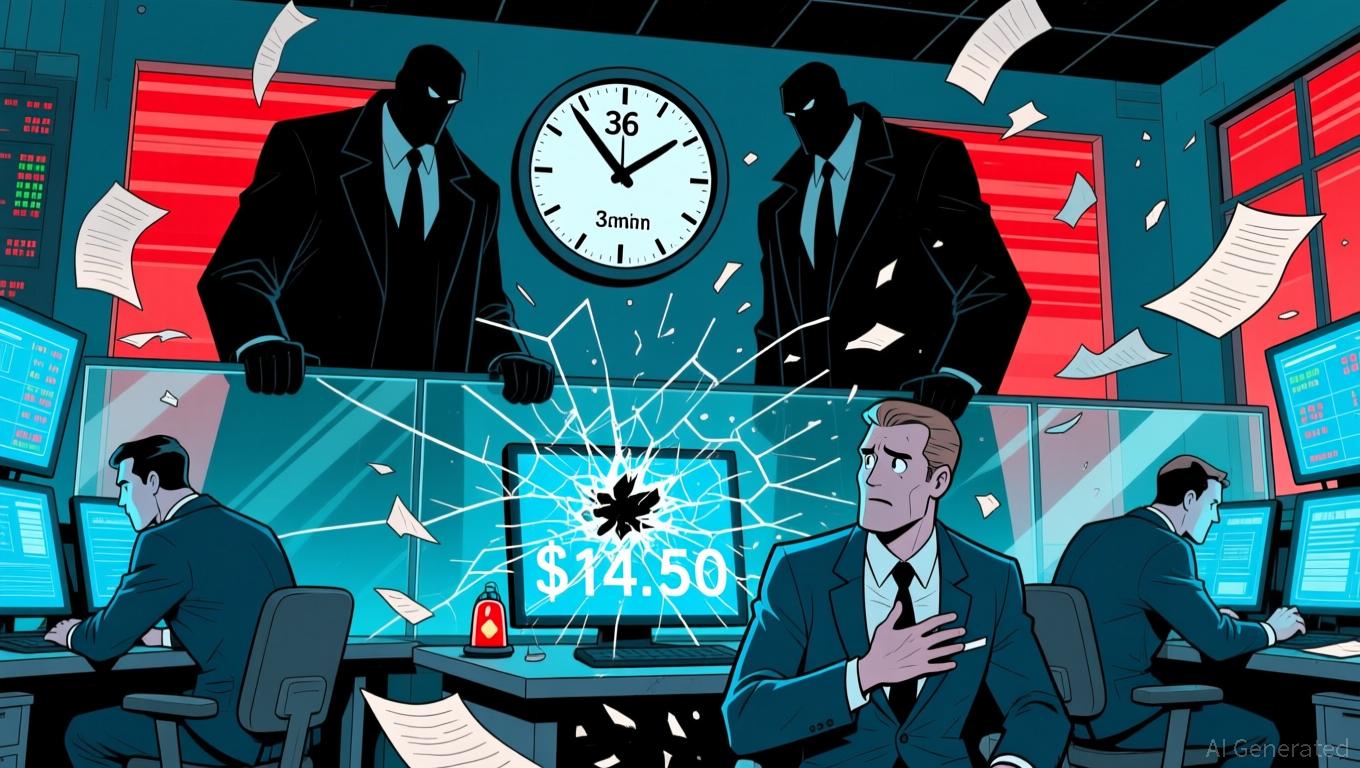Ethereum’s Profit-Taking Pressure Dips — So Why Does Price Still Look Weak?
The Ethereum price is showing one of its weakest profit-taking incentives in months, hinting at a possible bottom. But heavy long-liquidation pressure and a falling channel still limit any recovery. ETH needs major confirmations before any real reversal can take shape.
Ethereum price is down 18.5% in the past 30 days and about 5.2% this week. It is holding up slightly better than Bitcoin on the weekly chart, but it is nowhere close to recovery. One key on-chain signal shows that most traders have almost no reason left to book profits.
Under normal conditions, that would help form a bottom. However, if profit-taking pressure has already dissipated, the obvious question is why the Ethereum price still refuses to bounce.
Profit-Booking Incentive Drops, But Not Enough To Confirm A Bottom
Net Unrealized Profit and Loss (NUPL) has dropped to 0.23, the lowest reading since July 1. NUPL tracks investor psychology by measuring the amount of unrealized profit or loss in the market.
It shifts between phases such as capitulation, where most wallets hold losses, and belief or denial, where confidence grows.
 ETH Profit-Booking Reasons Are Fewer Now:
ETH Profit-Booking Reasons Are Fewer Now:
The last time NUPL dropped even lower was June 22, when it hit 0.17. That move came right before Ethereum rallied 106.3%, which helped NUPL rise from capitulation into belief and denial.
Today’s reading sits above that level, which means ETH has room to fall further if the market weakens.
A lower NUPL print would match the conditions that existed before the previous major reversal. Although profit-taking incentives are now minimal, the bottom signal is not yet fully aligned.
Liquidation Pressure Explains Why Price Isn’t Responding To NUPL
The derivatives market gives the clearest reason for Ethereum’s hesitation. On Gate’s ETH-USDT liquidation map, short exposure is heavy at $2.36 billion, but long exposure is still sizeable at $1.05 billion.
 Ethereum Liquidation Map:
Ethereum Liquidation Map:
This imbalance keeps pressure on both sides. The thickest long-liquidation cluster stretches roughly to $3,050. ETH is trading near this level, which means even a mild drop can trigger forced selling from long traders.
 Long Liquidation Leverage Could Limit Upside:
Long Liquidation Leverage Could Limit Upside:
Long liquidations can easily overpower the positive effect of low NUPL. Even if shorts are over-exposed, the remaining long leverage is large enough to keep the market unstable.
This is the link between the two metrics: Ethereum cannot use a profit-bottom setup as long as this long-liquidation wall remains intact.
Ethereum Price Chart Lines Up With The Same Risk Zone
The Ethereum price chart reinforces the same story. ETH is still trading inside a falling channel, and the $3,053 region remains the most important support. This is the exact zone where the strongest long-liquidation cluster sits. If the price loses $3,053, the odds of a deeper drop rise sharply.
That kind of drop aligns with the path where NUPL could slide toward its June low of 0.17, matching the setup that preceded the last major leg higher.
 Ethereum Price Analysis:
Ethereum Price Analysis:
There is a bullish path, but it needs far bigger confirmation. ETH must reclaim $3,653 to show real strength, which is still more than 14% above current levels. From there, clearing $3,795 would flip the structure from bearish to neutral.
This move also tests the upper boundary of the falling channel, which has only two clean touches and is not a strong resistance. If NUPL stabilizes, shorts begin to unwind, and Ethereum price clears these levels, a sharp rebound becomes possible. Until those conditions merge, ETH stays trapped between a fading profit motive and a stubborn liquidation overhang.
Disclaimer: The content of this article solely reflects the author's opinion and does not represent the platform in any capacity. This article is not intended to serve as a reference for making investment decisions.
You may also like
Bitcoin News Today: Bitcoin ETFs See $1.1B Outflow, While New Investments Flow Into XRP and Solana Funds
- U.S. Bitcoin ETFs lost $1.11B in three weeks, with BlackRock's IBIT and Grayscale's BTC leading outflows amid Bitcoin's six-month low at $95,200. - Analysts link redemptions to macroeconomic uncertainty and profit-taking after October's $126,000 rally, while Harvard tripled its IBIT holdings to $442.8M. - XRP and Solana ETFs attracted $255M in new capital, highlighting crypto diversification as Ethereum ETFs also faced $259M in single-day outflows. - Market debates Bitcoin's $94,000 support level amid th

Chainlink's Value Plummets Even as Ecosystem Surges by $26 Trillion
- Chainlink (LINK) plummeted to a 2.5-month low below $14.50, breaking critical support with 118% 24-hour volume spikes signaling institutional selling pressure. - A 360,000-token liquidation cascade and 27% unrealized loss in Chainlink Reserve holdings highlight market fragility despite $26T+ oracle-driven transaction value. - Institutional adoption via Stellar partnerships and tokenized bonds offsets short-term bearishness, yet RSI at 41.72 and 58.79% Bitcoin dominance signal ongoing altcoin weakness. -

Meme Coin Frenzy Sparked by Whale’s $19 Million Wager and Trump’s Support for Crypto
- A crypto whale injected $19.86 million into 22 meme coins in one hour, reflecting heightened speculative activity amid Trump-era crypto-friendly policies. - Trump-linked Bitcoin miner Hut 8 Corp reported 460% revenue growth, leveraging low-cost operations and 4,004 bitcoins ($400M value) to capitalize on market trends. - Canary Capital's MOG ETF filing triggered a 17% market cap surge for the meme token, highlighting institutional interest in community-driven crypto assets. - Analysts warn of regulatory

India’s Blockchain Strategy: National Tokenisation to Upgrade Financial Infrastructure
- India's economic advisor meets Polygon and Anq Finance to discuss tokenisation frameworks and sovereign digital assets for financial modernisation. - Proposed Asset Reserve Certificate (ARC) model uses government securities as collateral, aiming to create secure, sovereign-backed digital settlement units. - Discussions highlight tokenisation benefits like faster settlements and reduced risks, while stressing regulatory alignment with existing financial infrastructure. - Collaboration positions Polygon as

